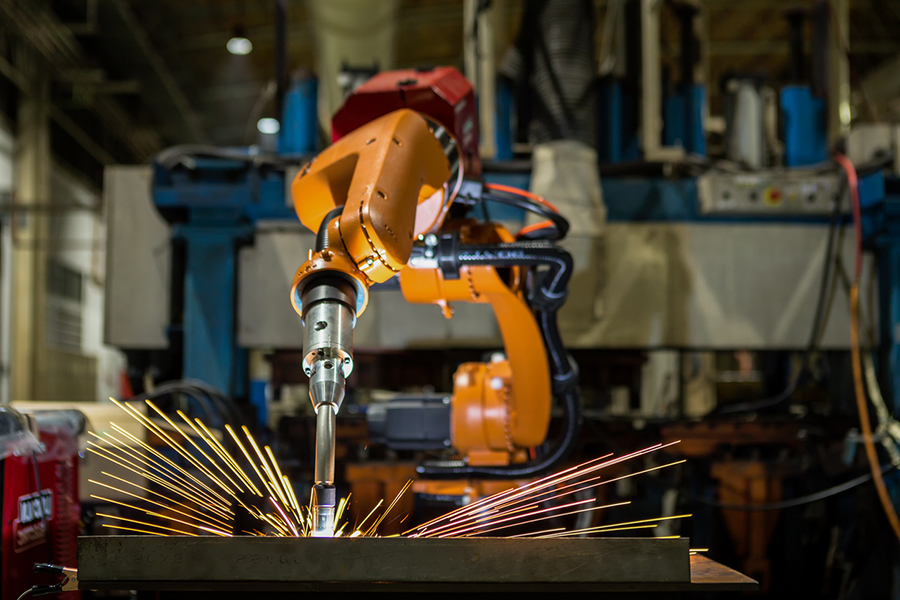Are you interested in taking your robotic welding to the next level? Robot welding is an excellent option for many metalworking projects. However, getting that perfect weld will take expertise and experience. To help you ensure your robot welding projects come out with top-notch results anytime, we’ve put together an informative guide full of helpful advice on optimizing your process.
We’ll discuss everything from tools and materials selection to programming options designed to give you the best-finished product possible. So, if you want to improve your robot welding successes and get optimal results, keep reading.
Choose The Right Welding Robot For Your Project
If you’re planning a welding project and are looking for the highest quality results, it pays to do your research before investing in a welding robot. Taking the time to find the best robotic welding solution for your particular needs will ensure you get excellent welds with greater precision and speed, saving you money in the long run. Look closely at capability parameters such as reach, repeatability, and accuracy for any robot you consider.
Additionally, select robots made by reputable manufacturers with good customer service ensure that training support is available when needed and repairs can be quickly conducted. Choosing the right welding robot will bring outstanding results to your project and make transitions into automated operations more successful.
Utilize Welding Robot Simulation Software
Welding robot simulation software can help you avoid costly mistakes that could disrupt your production line or delay project completion. Using a virtual environment to simulate welding paths, you can pre-program robots and check for collisions without turning the machine on. It allows welders to troubleshoot and correct issues before they become actual problems, saving time and resources.
Robot simulation also increases safety by eliminating physical obstacles from the work environment, thus reducing the risk of human injury. Additionally, welding robot simulation software allows you to make sure your program is perfect before it’s loaded onto the machine, making sure you get optimal results every time.
Utilize Welding Robot Programming Options
Robotic welding programming allows you to automate production processes and ensure consistent results. Programming is the key to successful robot welding and can be done in various ways, including teaching pendants, offline systems, and manual commands.
Teaching pendant programming is the most common method welders use when working with robots because it’s simple and intuitive. Offline systems, however, are more powerful and allow for greater flexibility in programming, allowing complex weld paths to be created with ease. Manual commands can also be used when working with a robot; this allows the user to customize their program on the fly and make adjustments during operations.
Select The Suitable Welding Materials And Tooling
Another critical factor in successful robotic welding is selecting suitable materials and tooling for your project. The type of material you use will depend on the application and requirements, so consider factors such as strength, durability, and corrosion resistance.
Additionally, it’s essential to choose the right tools and accessories for the job; this includes selecting welding torches, contact tips, nozzles, and wires that are suited for the material you’re working with.
Having suitable materials and tooling on hand will help ensure that your robot welding projects come out with top-notch results.
Consider Welding Robot Motion Strategies
Motion strategies are essential in robotic welding. Therefore, selecting the right one for your application will make a big difference. Robots use three main types of motion strategies: linear, circular, and oscillating. The linear motion follows a straight line from point A to point B, while circular motion is used when you need to weld around an object. Oscillating motion is used when welding long, continuous welds and involves the robot moving back and forth.
Selecting the right motion strategy for each application will give optimal results while reducing cycle times. Additionally, consider factors such as speed, accuracy, and repeatability when selecting a motion strategy; this will ensure that the robot works efficiently and produces quality results.
Utilize Welding Torch Cleaning And Maintenance
Robot welding requires specialized tools and accessories, so it’s essential to clean and maintain them regularly. Keeping the welding torch clean will help the robot perform optimally and extend its life span while ensuring good weld quality.
To clean the torch, use compressed air to blow away any dirt or debris, then use a cleaning solution to remove any residue. Additionally, inspect the contact tip and nozzle regularly; these parts should be replaced if damaged or worn down.
Conclusion
Robotic welding can be a highly effective and efficient way to produce quality welds with precision. To get the best results, it’s essential to consider factors such as programming, materials and tooling selection, motion strategies, and torch maintenance. Following these tips will help ensure that your robotic welding projects are successful every time.

